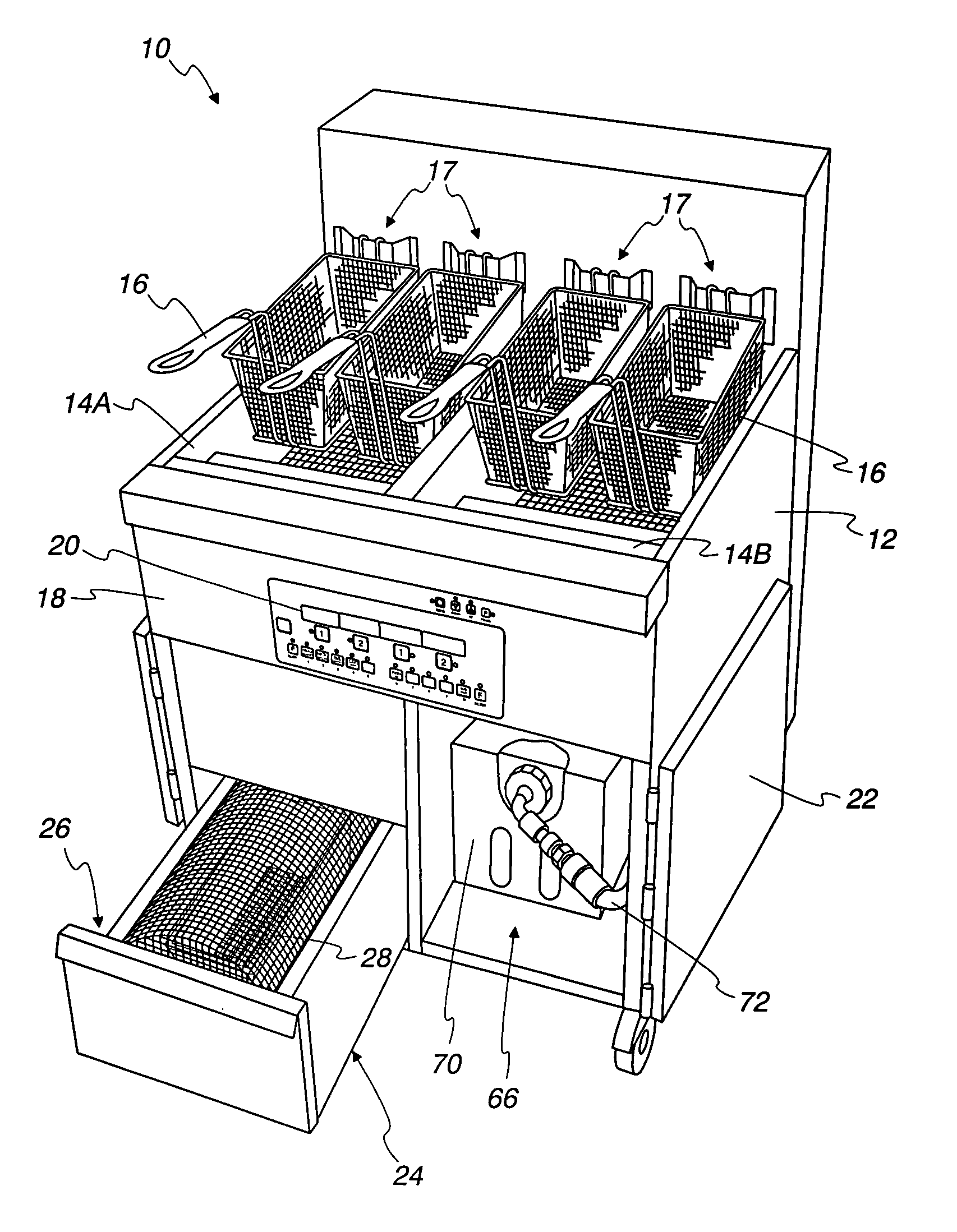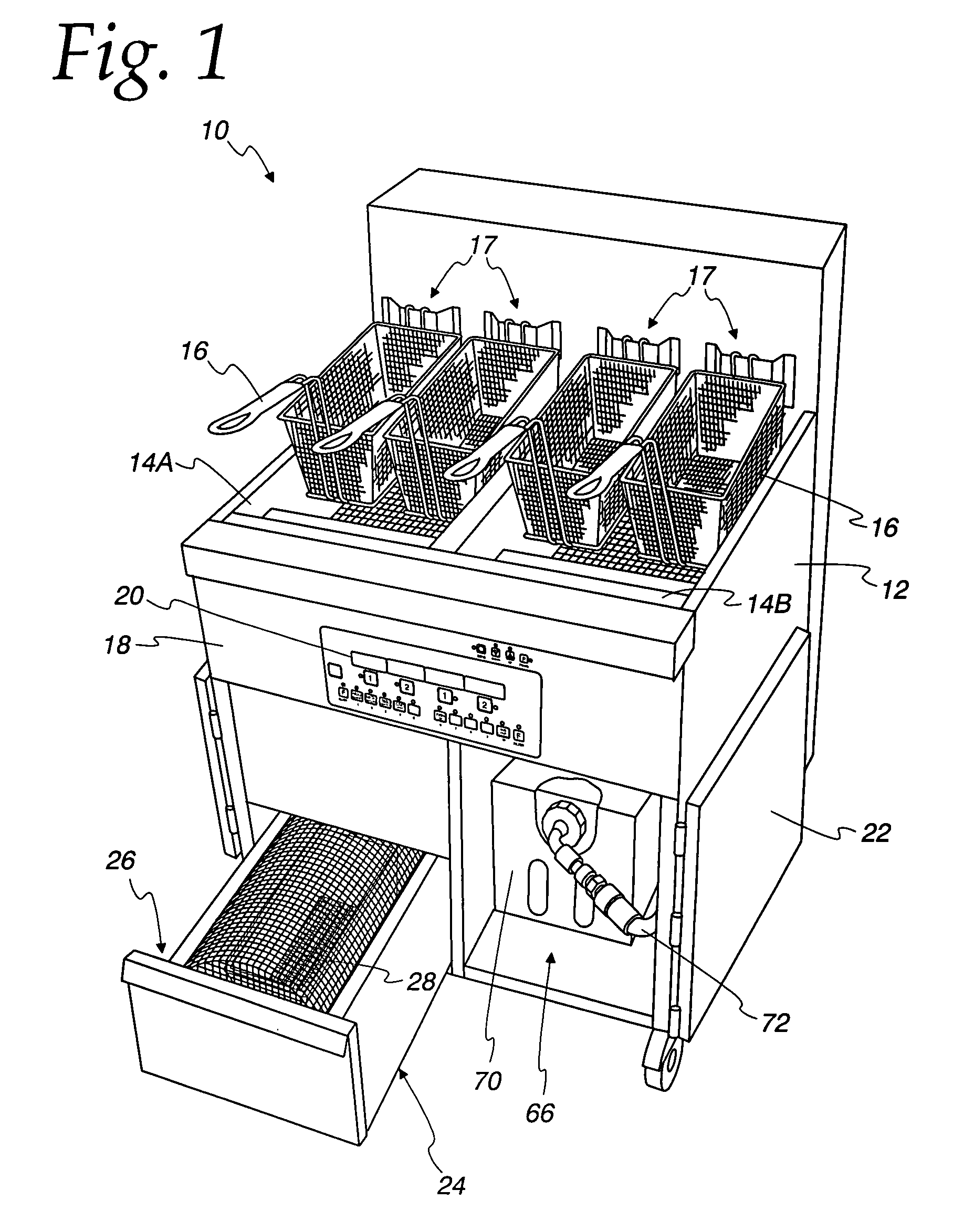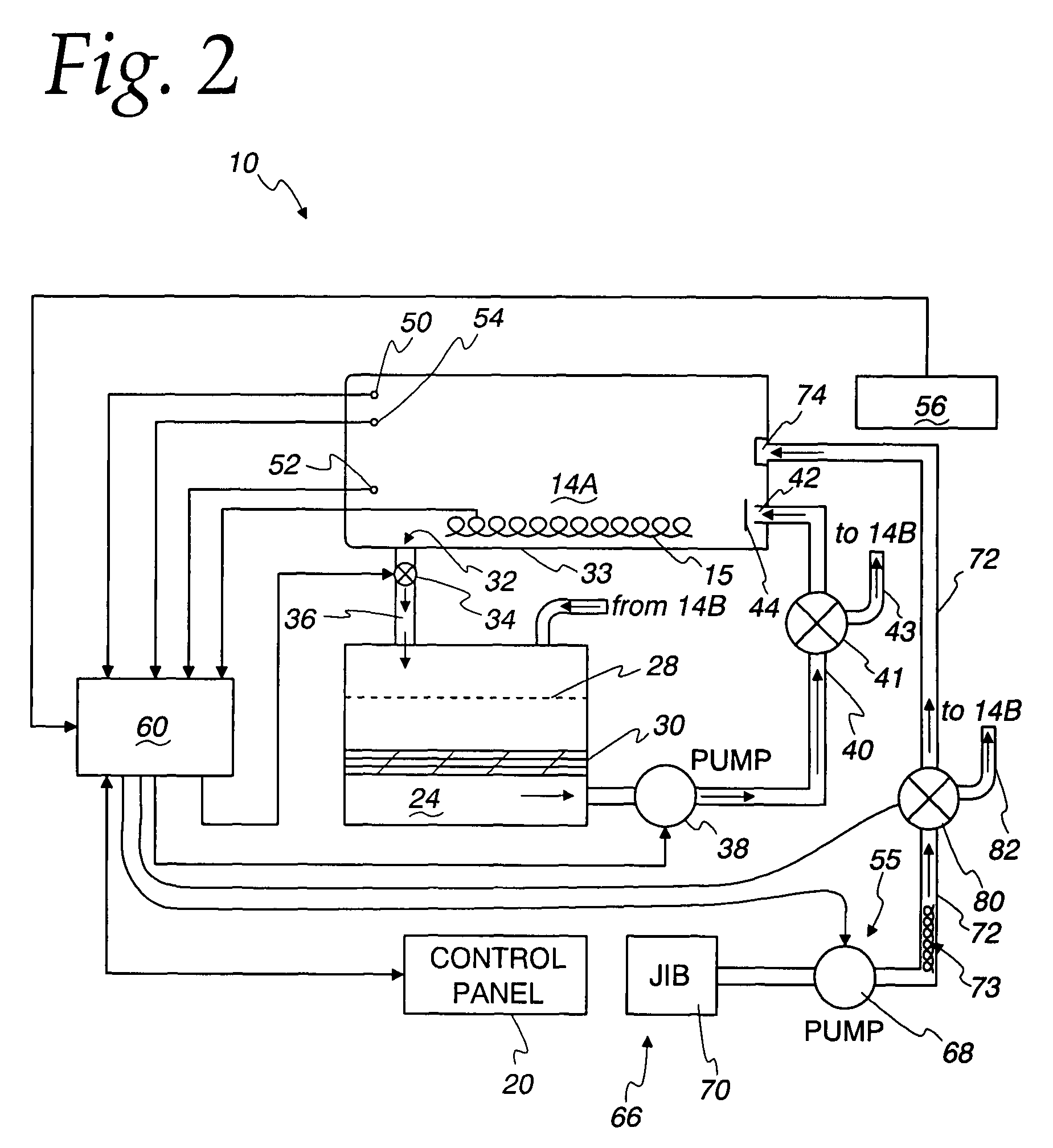Low oil volume frying device and method
a low-volume, frying technology, applied in the field of systems and methods for frying food, can solve the problems of increased oil degradation, degraded cooking oil, and contamination of oil with food matter and other debris, and achieve the effect of reducing oil consumption and high quality of the resultant cooked food products
- Summary
- Abstract
- Description
- Claims
- Application Information
AI Technical Summary
Benefits of technology
Problems solved by technology
Method used
Image
Examples
example i
Conventional Food Frying
[0083]A fry vat of a fryer apparatus was filled to a conventional initial nominal cooking level of about 50 pounds of cooking oil. The oil was heated to a targeted cooking temperature of about 335° F. (168° C.) during daily periods of operation of approximately 10 continuous hours per day. The fry vat was used to sequentially fry numerous batches of frozen French fries with each batch weighing about 1.5 pounds prior to cooking. The batch weight of frozen French fries relative to the weight of the vat oil was 0.030. Whenever two 1.5 pound batches of fries were to be cooked simultaneously, at least a 30 second delay was provided between submerging the first fry basket holding the first batch, and the second fry basket holding the second batch of frozen fries. No more than two batches, for a total of about 3 lbs of frozen French fries, were cooked at the same time. Thus, the maximum weight of the food cooked at any given time was 0.06 times the weight of the 50 ...
example ii
Frying Food in Accordance with the Invention
[0084]A fry vat of a fryer apparatus was filled to an initial nominal cooking level of about 30 pounds of cooking oil. The oil was heated to a targeted cooking temperature of about 335° F. (168° C.) during the period of operation. The fry vat was used to sequentially fry numerous batches of frozen French fries with each batch weighing about 1.5 pounds prior to cooking. The batch weight of frozen French fries relative to the weight of the vat oil was about 0.05. When two 1.5 pound batches of fries were to be cooked simultaneously, at least a 30 second delay was provided between submerging the first fry basket holding the first batch, and the second fry basket holding the second batch of frozen fries. No more than two batches, for a total of about 3 lbs of frozen French fries, were cooked at the same time. Thus, the maximum weight of the food cooked at any given time was 0.1 times the weight of the 30 pounds of cooking oil in the vat. The fr...
PUM
 Login to View More
Login to View More Abstract
Description
Claims
Application Information
 Login to View More
Login to View More - R&D
- Intellectual Property
- Life Sciences
- Materials
- Tech Scout
- Unparalleled Data Quality
- Higher Quality Content
- 60% Fewer Hallucinations
Browse by: Latest US Patents, China's latest patents, Technical Efficacy Thesaurus, Application Domain, Technology Topic, Popular Technical Reports.
© 2025 PatSnap. All rights reserved.Legal|Privacy policy|Modern Slavery Act Transparency Statement|Sitemap|About US| Contact US: help@patsnap.com



